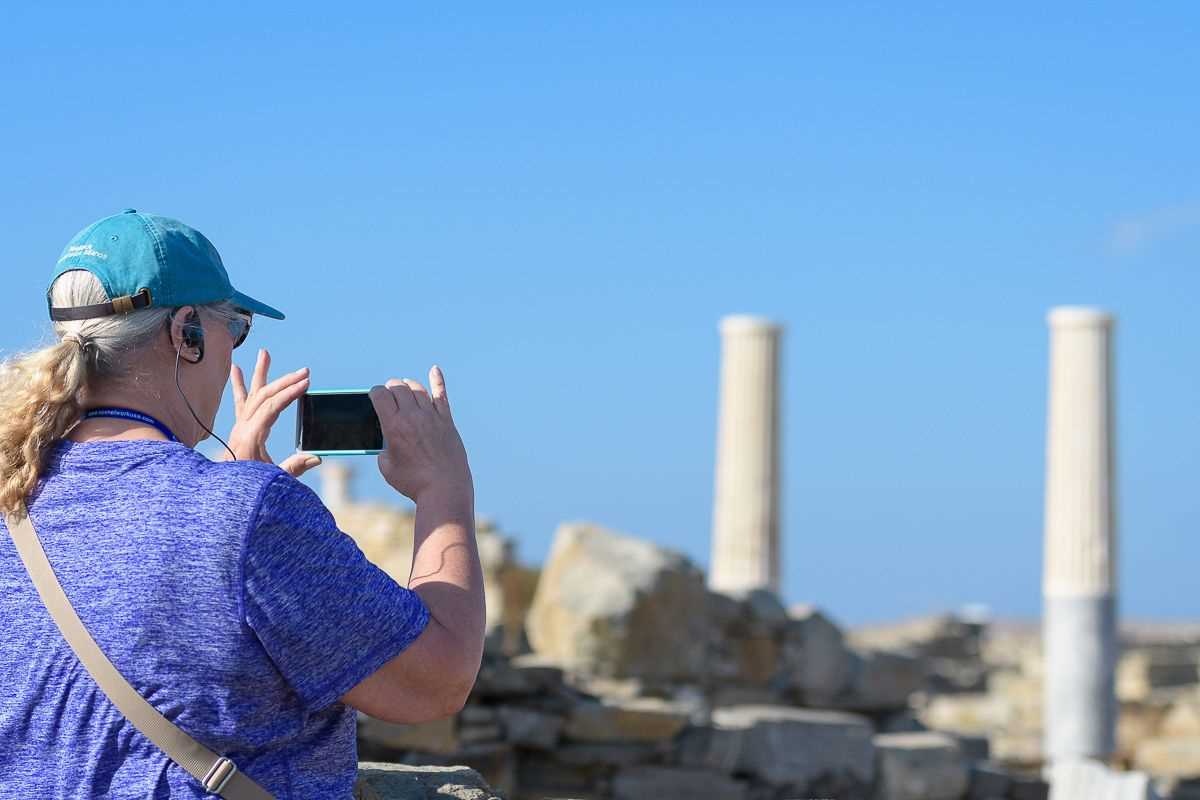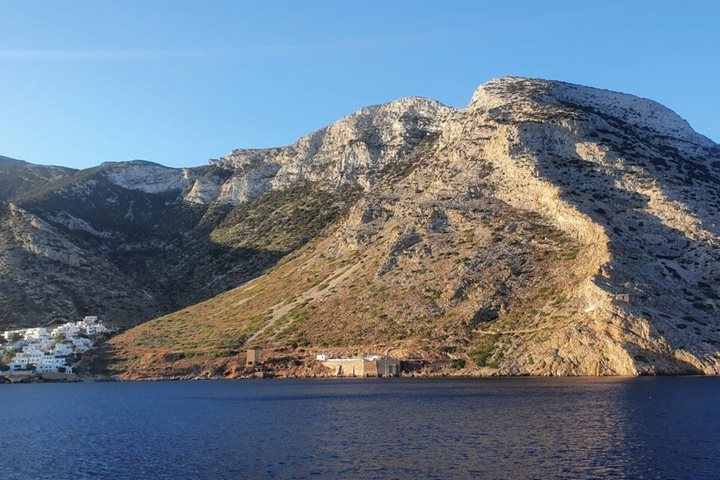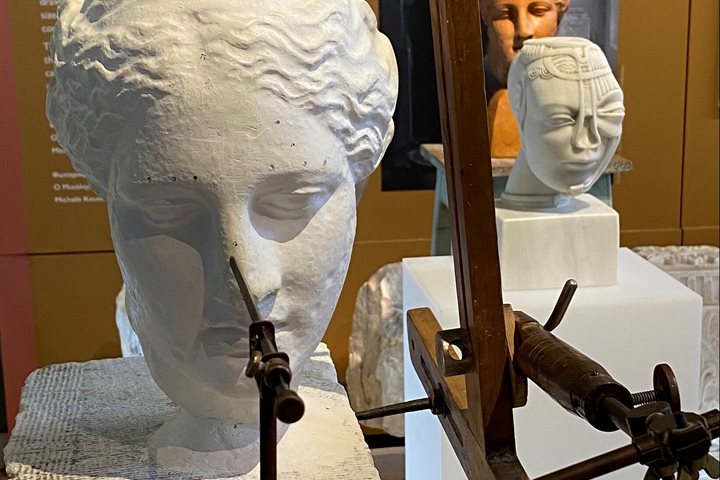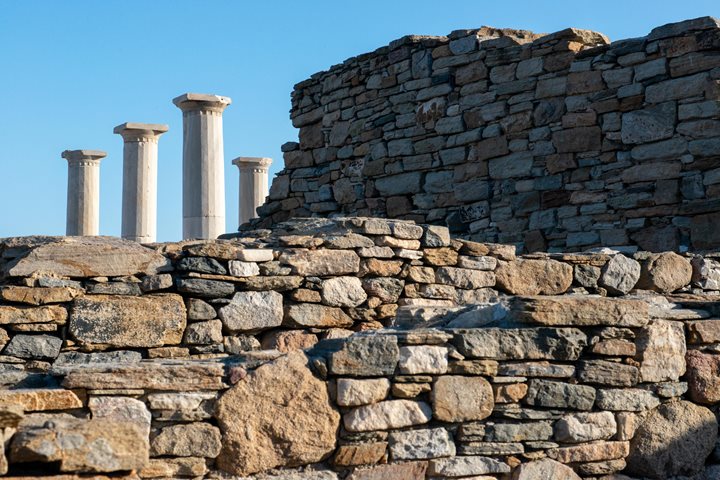Our first stop today was at the sacred island of Delos, the birthplace of the twin gods Artemis and Apollo. We began our tour in the Hellenistic-era residential district, near the ancient theater. Scattered remains, like an occasional olive press or a fishmonger’s stone table, hint at the thriving commerce that once existed on the island. This commerce resulted in wealthy merchants, whose private residences—some of the best preserved in the ancient world—were decorated with stunning mosaics and frescoed walls. We then proceeded to the Archaic-era sacred precinct, which included the fragments of the colossal kouros, meaning “sculpture of a youth”, dedicated by the Naxians. Although we could easily have spent all day exploring this fascinating archaeological island, increasing winds meant we had to return to ship before lunch. We spent a relaxing afternoon aboard Sea Cloud with photo instructor José Calvo providing an engaging discussion on photographic composition. His tips proved quite useful at our next stop, the vibrant island of Naxos. This island, unlike the other rather barren islands of the Cyclades, is famed for its agriculture, with wheat, barley, and potatoes growing on the island’s fertile plains. We walked through the Venetian Kastro (meaning “castle”) which was the capital of the Duchy of the Archipelago after the Fourth Crusade. Eleni and Kriton guided us through narrow, winding alleys, with periodic gateways surmounted by the marble coats of arms belonging to the Latin nobility. Thanks to centuries of Latin rule, Catholic churches can still be found on Naxos. After our tour some of us walked to the 6th-century B.C. marble gateway that is now the symbol of Naxos, and enjoyed another spectacular Aegean sunset.
9/12/2022
Read
Sea Cloud
Sifnos, Greece
Our weeklong expedition abord Sea Cloud has taken us through a wide range of the conditions that the Cycladic Islands have to offer. Today, with calm seas, we arrived in the charming seaside town of Kamares, the chief port of Sifnos. During antiquity, this island enjoyed a period of great prosperity as they were privy to plentiful deposits of gold and silver, and the Sifnians built fantastic monuments at Panhellenic sanctuaries with their newfound wealth. By the late 6th century BC, though, these mines were exhausted, and the islanders later fell within the influence of the Athenian Empire, aka the Delian League. Traces of the Sifnians’ former wealth are evident in the blocks of carved marble, originally from temples of the Ionic Order, which have been repurposed into present-day structures. In the Middle Ages, Sifnos was part of the Byzantine Empire until the early 13th century when the Venetians wrested control of the Cyclades after the Fourth Crusade. This medieval phase of the island’s history is evident in the charming village of Kastro, where we arrived after a short bus ride from the port. Situated atop an outcrop, this fortified settlement stands aloft about 200 feet above the rocky shoreline of the Aegean Sea below. Its thick outer wall is breached by only a handful of narrow passages, while the narrow streets and staircases within it are ripe for exploration. To the east of Kastro, a beautiful little chapel with a characteristic blue dome (the Church of the Seven Martyrs) sits proudly on a peninsula against the stunning blue waters around it. Upon returning to Kamares harbor, some of us visited a sandy beach–it was time for a swim! Afterwards, we enjoyed a fantastic buffet lunch on the ship, with a special pasta bowl on offer. During the afternoon, the weather shifted, and we were once again feeling the steady stream of 20 knot winds from the north. In the evening, we gathered one last time for the Captain’s farewell drinks, and we shared our memories together with the voyage slideshow. After dinner, we got one last surprise– Sea Cloud’s crew took us through a hearty rendition of traditional sea shanties. Cheers to the (not so) drunken sailors!







